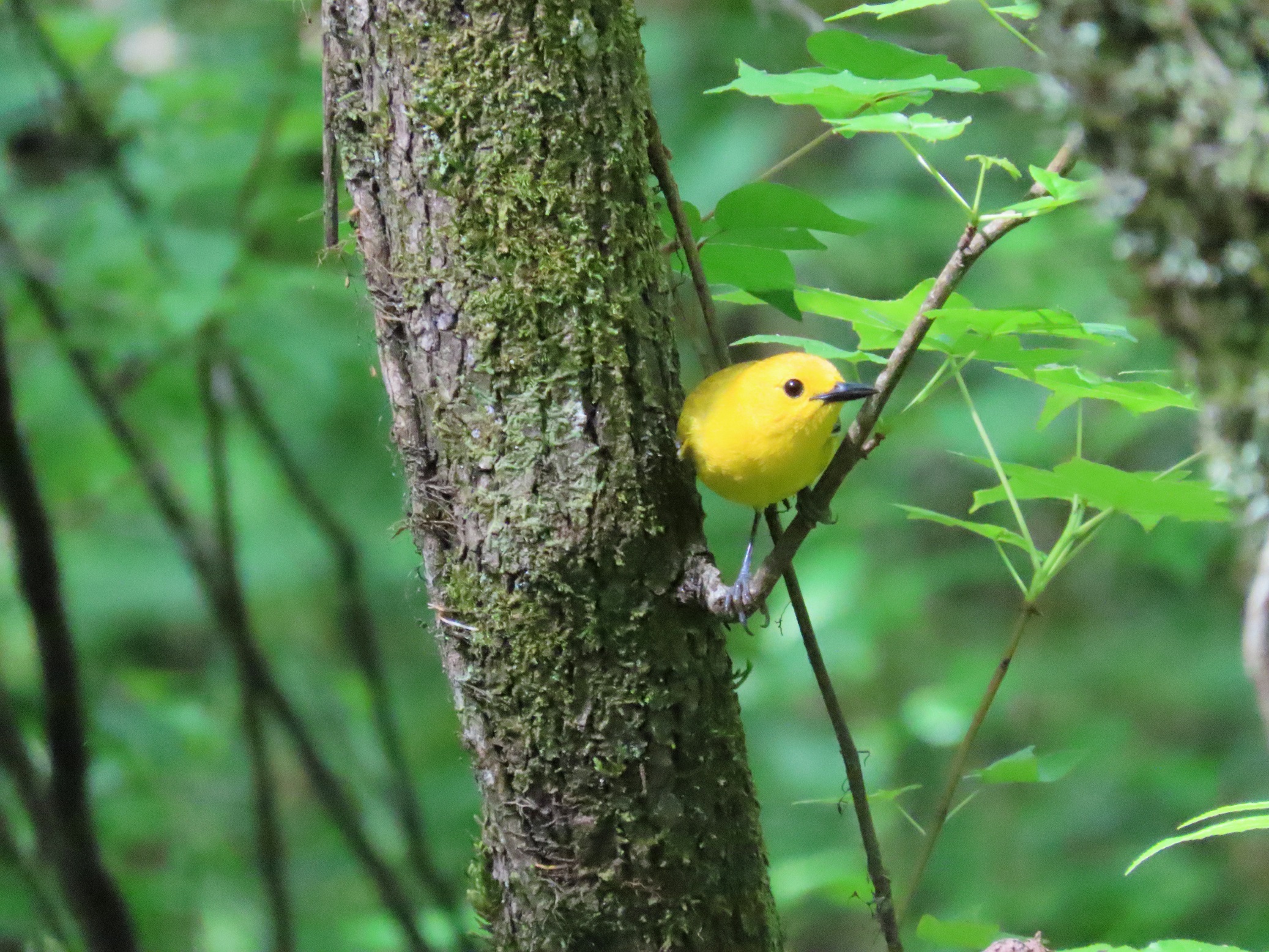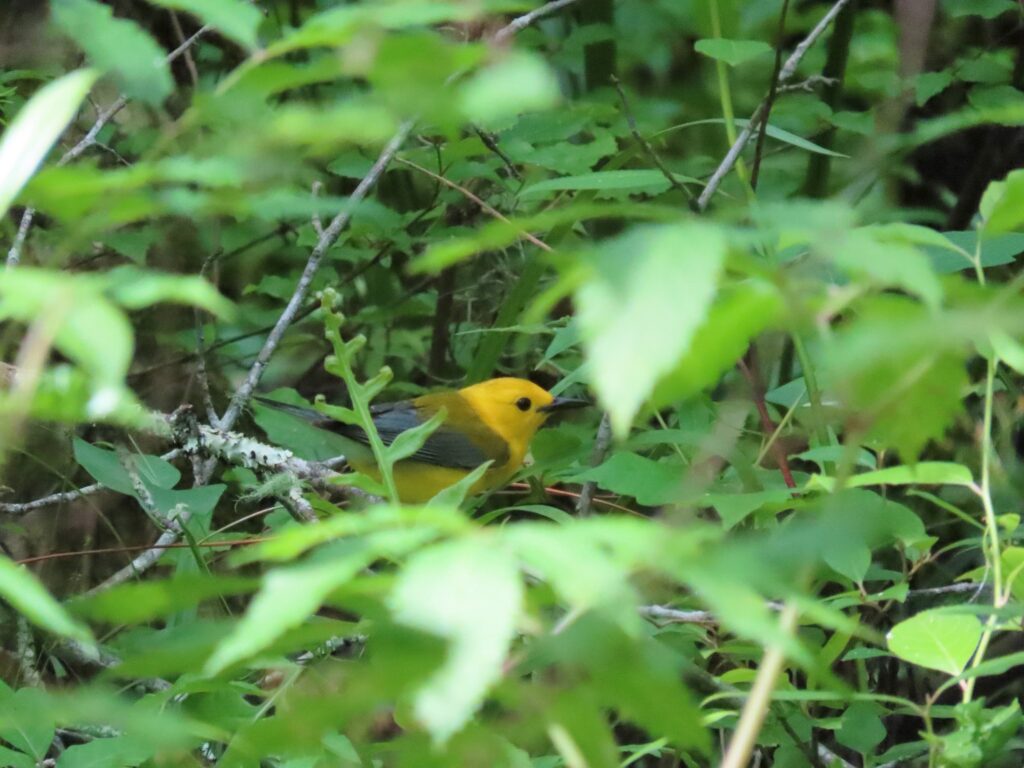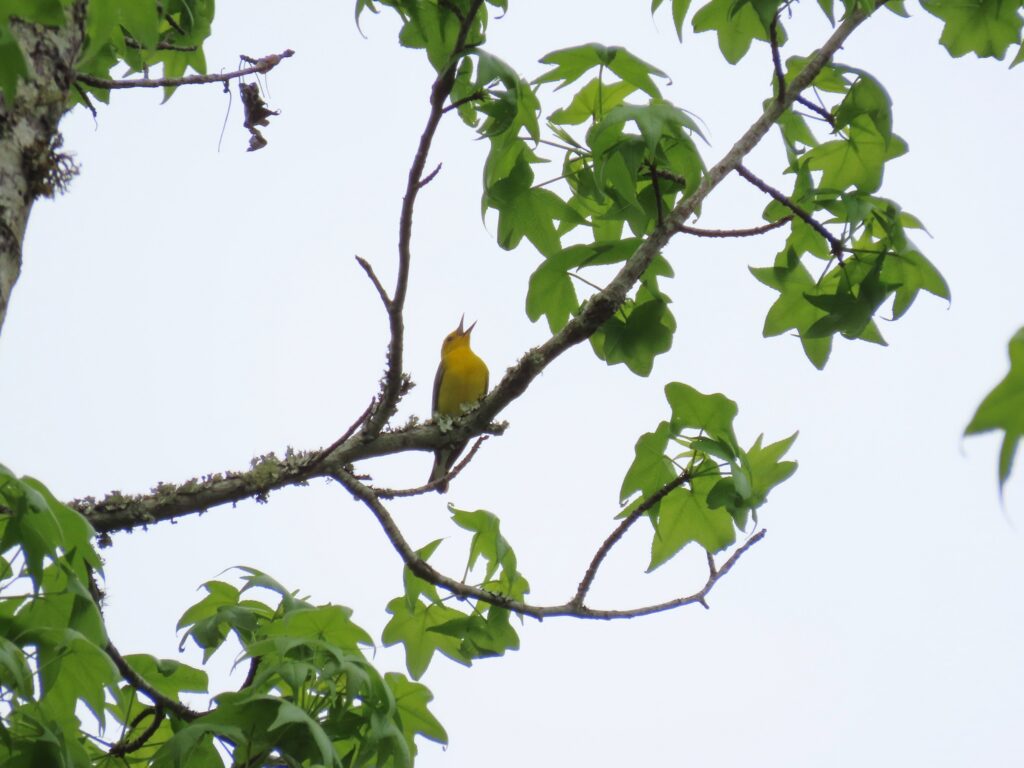




This week for Flora and Fauna Friday it’s the saffron-soaked, sweet-singing songbird of the southern swamps, the Prothonotary Warbler (Protonotaria citrea).
The sounds of summer don’t solidify until the cypress seem to shudder and flutter with the echoes of this bird’s staccato serenade, a series of cyclic “Sweet!” statements spit skyward by this sulfur-stained songbird. This is the sonorous signature our Prothonotary Warbler signs to its swampy abode. Found throughout the East Coast and the Mississippi River basin, the Prothonotary Warbler calls our swamps, bottomlands, floodplains, oxbows, and carolina bays home from spring through summer. It seems wherever one can find abundant cypress, you can spy this warbler. The Prothonotary Warbler is a hard bird to miss as their head and breast positively glow a radiant sunflower-yellow, like the sun bursting through the cavernous and claustrophobic canopy of the swamp. Their shoulders fade to brass and their wings and tail transition to a uniform silvery-black. A beady black eye and pointed black beak poke prominently out from their head.
The Prothonotary Warbler is one of our many migratory warblers but they have some unique traits and fall within a genus by themselves. Like most warblers, they are insectivorous and a leaf gleaners, patrolling the canopy and mid-story for morsels. Their call is a loud, resonant series of repetitive “sweet” notes that can be heard far and wide as the song reverberates between the foliage of the forest canopy and the black waters of the swamp below it. Prothonotary Warblers are our only cavity nesting warbler, using holes carved by woodpeckers to build their nests. So, if you live by a swamp, you may be able to attract nesting Prothonotary Warblers in spring by hanging nest boxes from trees over standing water or by mounting bluebird boxes to the back of free-standing duck nest boxes. These little yellow birds need the help too. Prothonotary Warbler populations have been in decline over much of their range since the 1960s due to historic habitat loss from historic bottomland deforestation, wetland draining, and river damming.
On a final tangent, you’re probably wondering to yourself what in the world prothonotary means. The term prothonotary in the modern United States refers to the title of Clerk of Court, specifically the chief clerk of a court of common pleas, but the term also applied to head scribes, clerks, and other similar positions at various times throughout history. It has long been told that the head scribes or clerks in various incarnations of the Roman Empire wore yellow hooded robes and thus, just like the Northern Cardinal was named after the catholic cardinals who wore red robes, the Prothonotary Warbler was named after these Roman prothonotaries who donned golden-yellow hoods. However, if one digs into history a bit, you find no references to, or paintings of, Roman prothonotaries wearing yellow vestments. If you dig into historical descriptions of the Prothonotary Warbler, you find expert naturalists from over a hundred years ago clueless as to why people call it the Prothonotary Warbler. Some have instead suggested that the term was applied to the birds colloquially by French colonists in Louisiana. Louisiana’s colonial government had an integral public notary system with local chief notaries, who held the title of Prothonotary. Apparently the people who held these bureaucratic positions, which were essential to the colony, developed a reputation for obnoxiously intrusive and repetitive conversational habits. So this yellow swamp bird, with a loud monotonous song that’s prolific in and around the Mississippi delta, is hypothesized to have been affectionately named by French colonists after their inescapable and annoying local bureaucrats, rather than after head scribes in the Holy Roman Empire. This obscure part of French colonial government was eventually lost from common knowledge and so, not having something to pin the name’s origin on, English speaking naturalists turned to the word’s use within the Roman Empire. Then at some point the origin of the birds name was likely conflated with that of the Northern Cardinal. Before you know it, history is rewritten to claim that Roman Prothonotaries wore yellow robes, all because a songbird has a weird first name. Or at least that’s what the competing theory proposes.